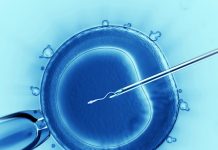Embryo transfer is the simplest procedure and is the extension of in vitro fertilization procedure (IVF).
This is the last step of the in vitro fertilization procedure. The main aim of this method is to make the conception possible that follows fertilization.
Generally, embryos are transferred back into your uterus at 2-8 cell stage that happens 48-72 hours after the retrieval.
Procedure involved in embryo transfer:
At the time of procedure, the doctor will instruct you to have a full bladder so that the uterus can be easily observed with an abdominal sonogram. The sonogram acts as a guide for the practitioner who is administering embryo transfer.
A set of embryos are transferred into a fine catheter that is inserted through your cervix.
An abdominal sonogram guides the practitioner to the right place at the top of uterus and then the embryos are inserted from the catheter into your uterus.
While undergoing the procedure, you need to rest on your back for at least two hours. After the completion of this procedure, the next thing you need to do is waiting for pregnancy symptoms to appear.
Number of embryos transferred during the method
Transferring up to four embryos per one IVF cycle will give optimum results. If there are more than four embryos transferred, there is a high possibility for multiple pregnancies that raise the chances of various other complications.
Transferring four embryos versus one or two increases the chances of pregnancy occurring. The most important thing you need to realize is that all four embryos can be implanted. The final step is waiting for the appearance of pregnancy symptoms.
Medications involved in the method of embryo transfer
Your practitioner will assess your health condition and make a decision whether you are in need of additional medication. After completion of this procedure, you will probably receive hCG injection.
This shot helps your ovaries to produce greater levels of progesterone during the embryo implantation phase.
In some situations, your doctor will inform you to take two additional hCG injections on particular days after undergoing the procedure.
Also, you need to take progesterone suppositories for some days after the embryo transfer.
No need to worry about this method as there are no side-effects with embryo transfer.
In very rare cases, some women experience mild cramping. After undergoing the procedure, your doctor will ask you to rest for a 24-hour period before you can get back to your normal activities.






